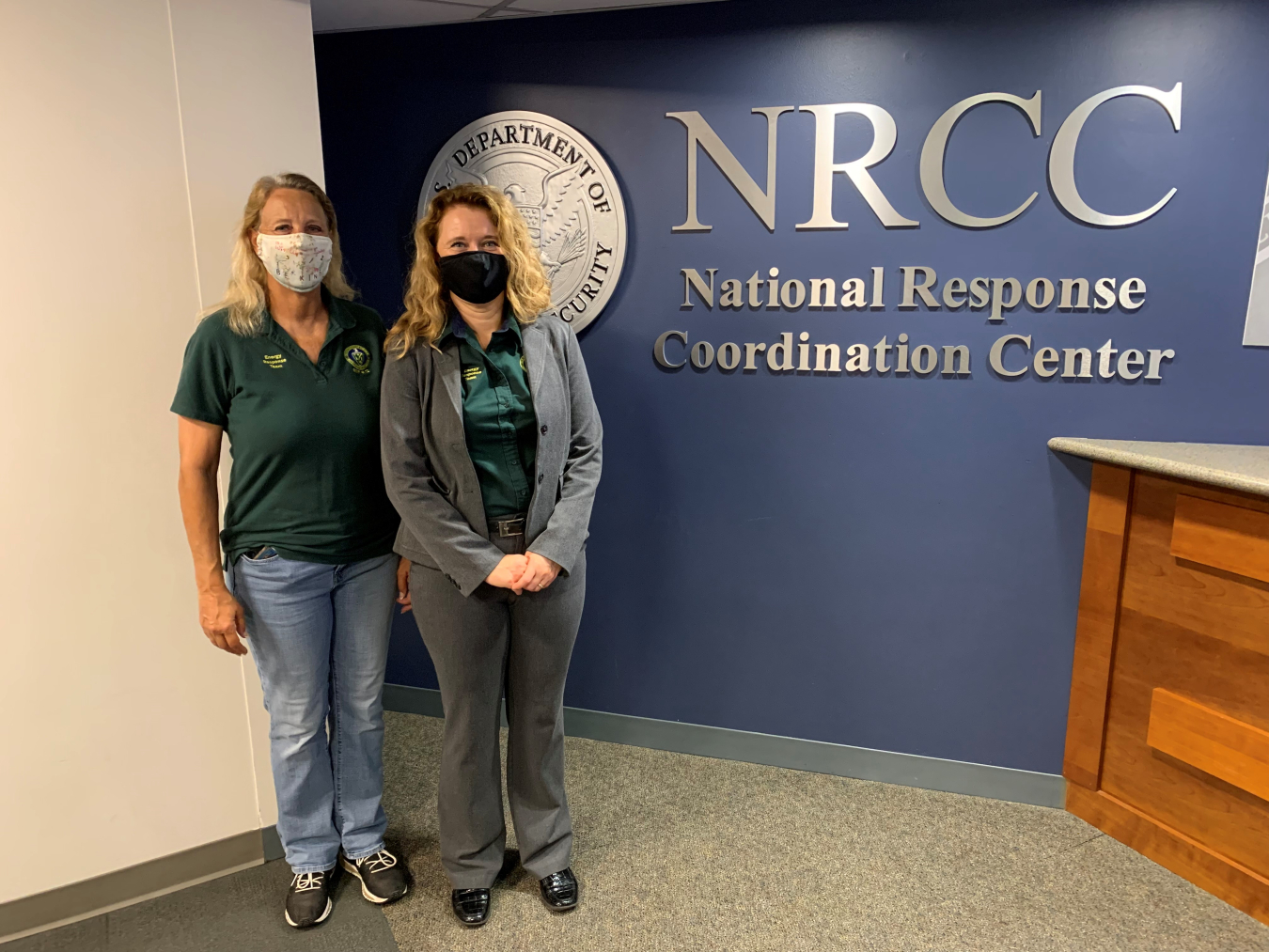Throughout 2022, CESER’s ESF #12 response teams managed numerous rapid deployments and engaged in training and preparedness exercises to stay on top of best practices.
Office of Cybersecurity, Energy Security, and Emergency Response
February 3, 2023
Over the course of a typical year, the Department of Energy (DOE) is called on to respond to a variety of incidents, weather events, and natural disasters as the lead agency for Emergency Support Function (ESF) #12 for the energy sector. In this role, we work with public and private sector partners to secure the nation’s critical energy infrastructure and respond to energy disruptions that affect national security, public health and safety, and the U.S. economy. CESER manages these response and recovery functions, including deployment of responders.
Throughout 2022, CESER’s ESF #12 response teams managed numerous rapid deployments and engaged in training and preparedness exercises to stay on top of best practices. During deployments, our responders provide assistance and share technical expertise with energy asset owners and operators, other Federal agencies, and state, local, tribal, and territorial governments. They also conduct field assessments, collect and evaluate data on energy system damage, assess state and national impact, and assist locals with overcoming the challenges of restoring energy after a crisis. These efforts help to expedite the restoration of power to households, businesses, and entire communities.
Luck Favors The Prepared
The year kicked off with a group training series in January and February, which included sessions designed to train new responders. The 2022 Responder Engagement Webinar series also began in January and was designed to keep responders engaged on tools, events and the ESF #12 mission. The 2022 refresher training incorporated lessons learned from the record breaking 2021 hurricane season, an introduction to the Microsoft Teams Collaboration Tools, EAGLE-I upgrades, and a lesson on energy cybersecurity. Responders were also tested on their skills during a custom interactive exercise scenario. Training opportunities like these ensure that responders are ready when deployments are necessary.

A Hectic Hurricane Season
Though the 2022 storm season began more quietly than anticipated, it ramped up quickly, requiring rapid and efficient response and around-the-clock support from Response and Restoration staff members. Beginning in September, ESF #12 supported Hurricane Earl response activities in Puerto Rico and the U.S. Virgin Islands. This storm marked the start of an escalation in a hurricane season that included 14 named storms, eight hurricanes, and two major hurricanes. Five Catastrophic Incident Response Team members were deployed to the islands to assist where needed.
This swift response was shortly followed by the largest deployment of the season as Hurricane Fiona made landfall on the coast of Puerto Rico as a Category 4 storm, damaging the island’s power grid. ESF #12 deployed ahead of the storm to ensure that communication channels and responders were ready and available when needed post-landfall. While these responders were still in Puerto Rico, Hurricane Ian barreled toward Florida and the Carolinas. This storm was an extremely destructive Category 4 hurricane that ended up being the deadliest to make landfall in Florida since 1935. Homes, businesses, and entire communities were destroyed. Thanks to the efforts of our response team and local utilities, power was restored to 99% of affected residents within three days, and responders remained on site for many days after to assist with restoration activities.
Wildfires, Floods, and Algae
In May, responders were activated in support of wildfires ravaging New Mexico. The virtual deployment consisted of identifying appropriate state and Los Alamos National Lab emergency responders. A few months later in July, regional coordinators responded to a request from FEMA as the State of Kentucky conducted response operations regarding severe flooding. Some areas in the state were nearly devastated when flooding damaged homes and vehicles and destroyed businesses. Vital infrastructure for water and electricity was also damaged in the catastrophic event. And in August, ESF #12 responded to the US Virgin Islands when a State of Emergency was declared due to an unprecedented amount of sargassum algae that washed up on the coast. These massive amounts of algae can destroy wildlife and produce harmful gases or become a potential blockage of vital intakes for water desalination.
Throughout 2022, 38 ESF #12 responders were activated for a total of 169 days, effectively responding to two hurricanes, two tropical storms, flooding, wildfires, six National Special Security Events, and more. Thank you to all ESF #12 team members, and here’s to another year of teamwork, collaboration, and lifesaving successes!
For more information, visit CESER’s Emergency Response Hub.

